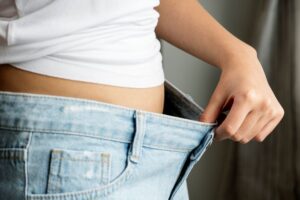Debunking Myths About Dry Hair Shampoo for Dry Scalp
You are not the only person that suffers from an itchy, dry scalp. Singapore’s humid and scorching weather can make these hair issues worse, therefore, coming up with practical remedies is essential. Unfortunately, there are a lot of misconceptions and common mistakes that people make when trying to take care of their scalp. Let’s debunk these misconceptions and learn why using a dry shampoo might be the best course of action for you.
Common Mistakes and Myths Regarding Scalp Care
Many people wash their hair excessively because they believe it will keep their scalp healthy and clean. Frequent washing eliminates the scalp of its natural oils, resulting in irritation and dryness. It is recommended that washing your hair no more than two or three times a week using shampoo for dry scalp can help retain its natural moisture.
The use of hot water during hair washing is another frequent blunder. Hot water can dry the scalp and hair, which worsens the dryness and itching, although it may feel therapeutic. Use cool or lukewarm water to maintain the natural moisture balance of the hair on your scalp. See and read more about the impact of water temperature on your hair here.
Furthermore, people frequently forget to hydrate; they pay attention to their hair rather than the moisture that scalps need. Your hair and scalp will receive the hydration they need when you apply a dry hair shampoo and hydrating conditioner together.
Debunking common misconceptions about dry hair shampoo is also essential. The notion that dry hair shampoo is reserved for those with dry hair is common. However, by moisturising and soothing the scalp, these shampoos are produced to address issues related to dry hair and the scalp.
Another misconception is that using dry hair shampoo will result in hair appearing flat and oily, yet good shampoos balance moisture without doing so. Moreover, some individuals think dry shampoo is too harsh for sensitive scalps. Although many of these dry shampoos are created to be gentle and reduce irritation, it makes them even more suitable for sensitive scalps.
Benefits of Using Dry Hair Shampoo
Understanding these common mistakes and misconceptions highlights the beneficial effects of using a dry shampoo, especially considering the environment in Singapore. In an effort to counteract the effects of over-washing and hot water, dry hair shampoos are enriched with moisturising elements that repair moisture and prevent dryness. They address the discomfort that is often overlooked by using the wrong items through providing soothing relief, reducing itching, and calming irritation.
Additionally, these shampoos nourish the scalp with essential vitamins and minerals that support healthy hair growth and overall scalp vitality—a helpful supplement in a time when hydration is sometimes disregarded. The notion that they are excessively harsh or produce greasiness is refuted by their mild cleaning capabilities, which ensure superb cleansing without eliminating natural oils from the scalp while preserving its natural balance.
This comprehensive strategy supplies a full solution to the frequent problems encountered by individuals who have dry and itchy scalps as it not only helps maintain moisture levels but also enhances the scalp’s resistance to external stressors and preserves overall well-being.
Conclusion
Caring for a dry and itchy scalp requires understanding the right methods and debunking common myths. Using a shampoo designed for itchy scalp conditions in Singapore can make a world of difference. It’s not just about cleaning your hair; it’s about nourishing and maintaining a healthy scalp.
For those looking to effectively manage their scalp health, consider the Rehydrate Amino Shampoo from Bee Choo. Formulated to tackle dryness and irritation, it’s an excellent choice for those struggling with scalp issues in Singapore’s climate.
Experience the benefits of proper scalp care and see the difference it can make here.




